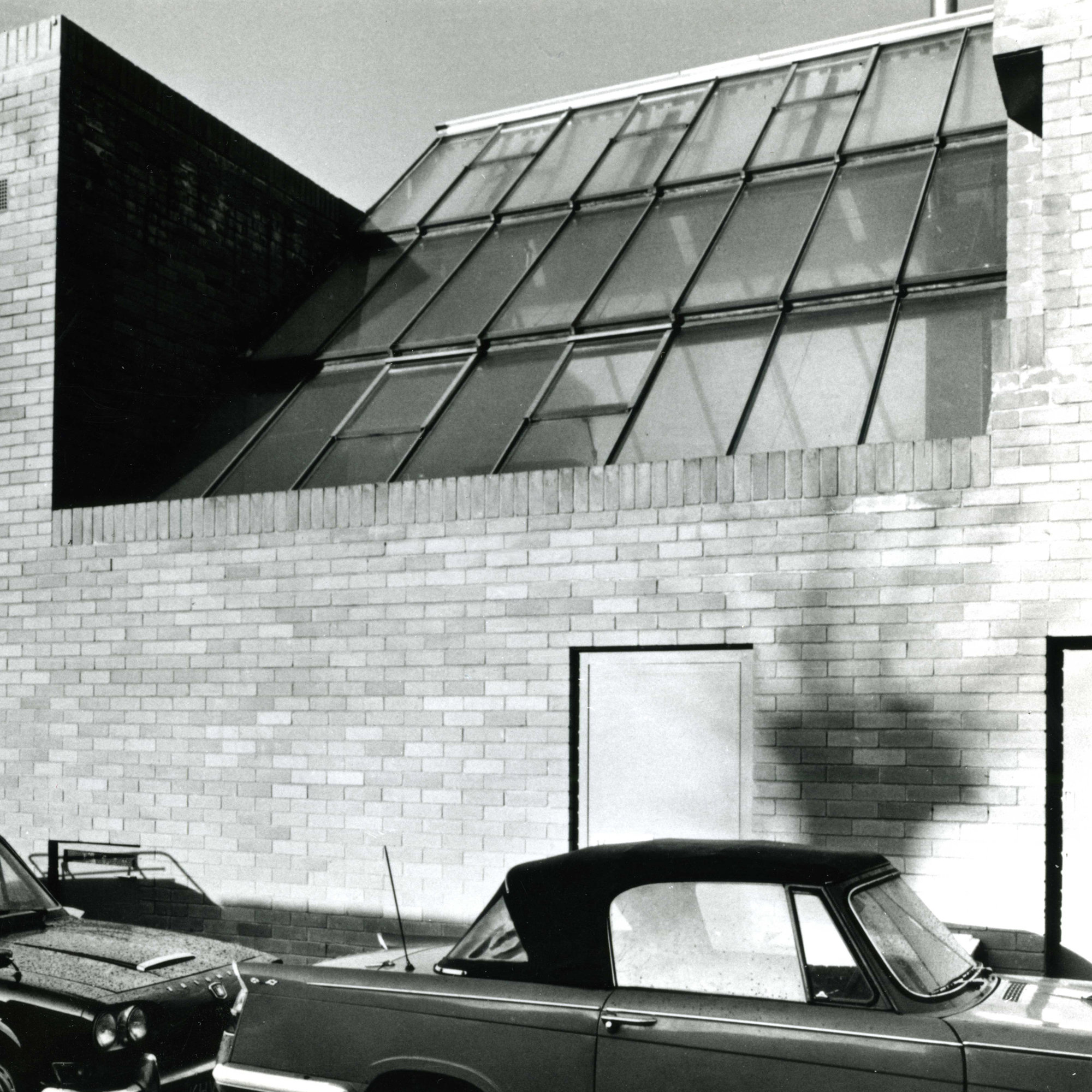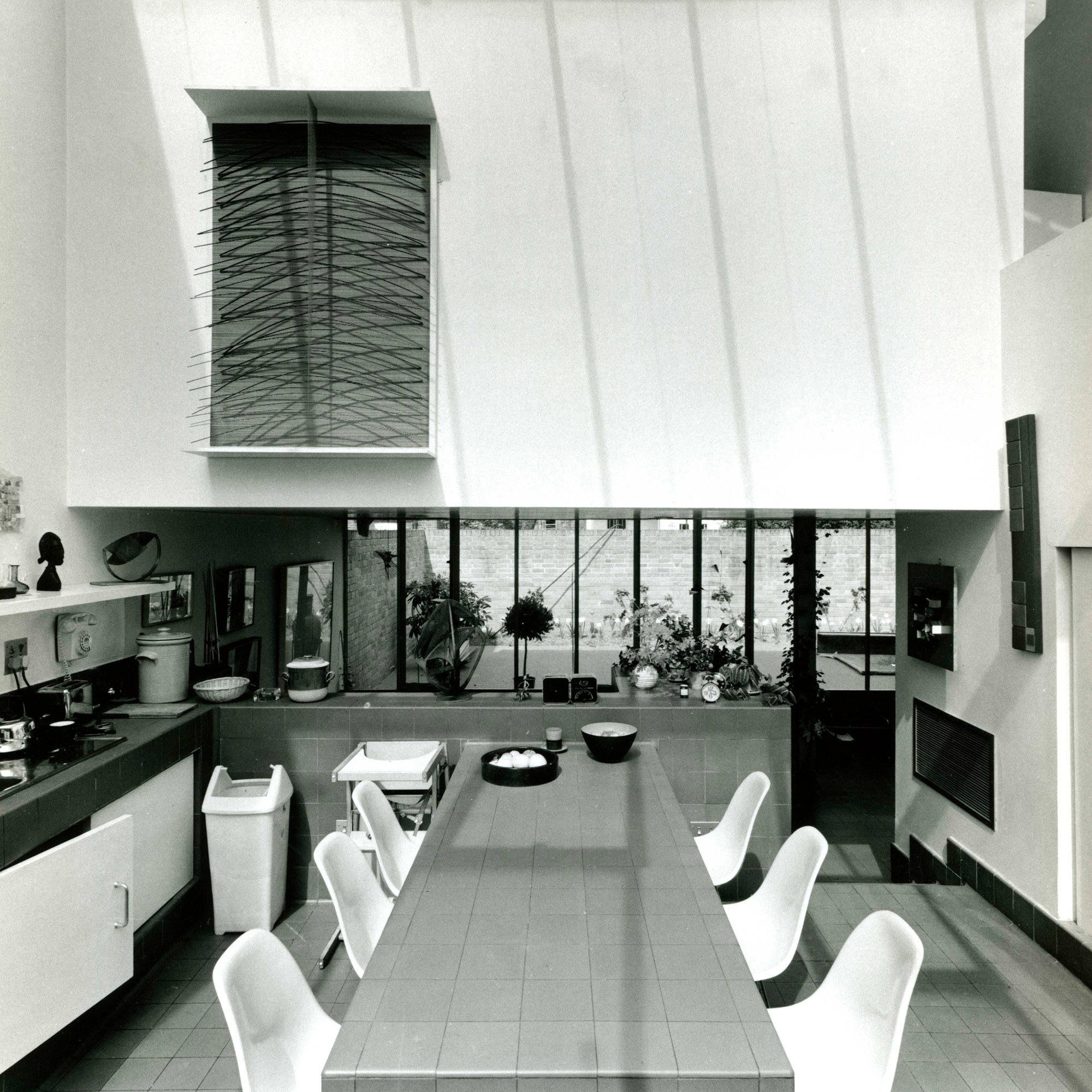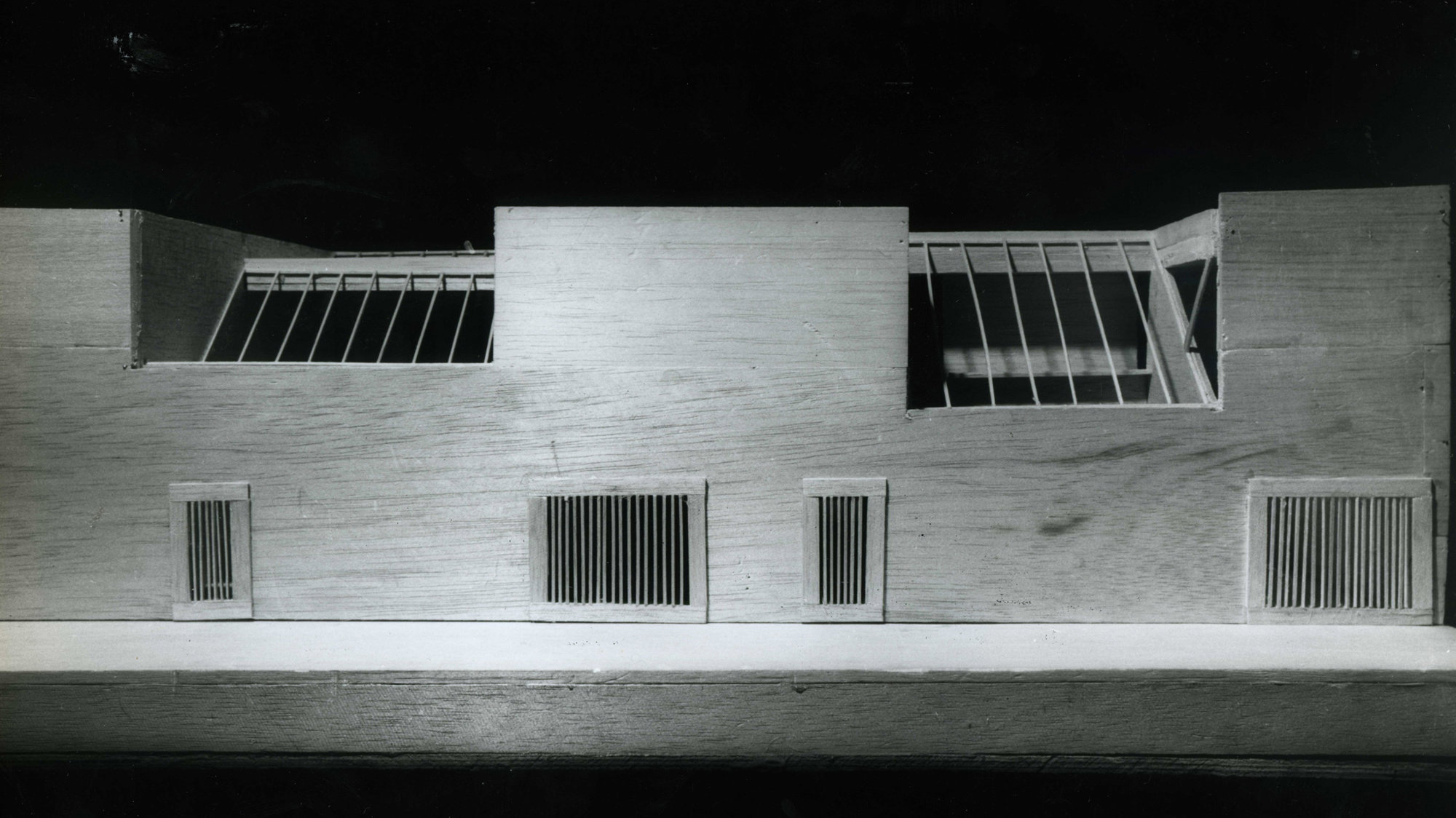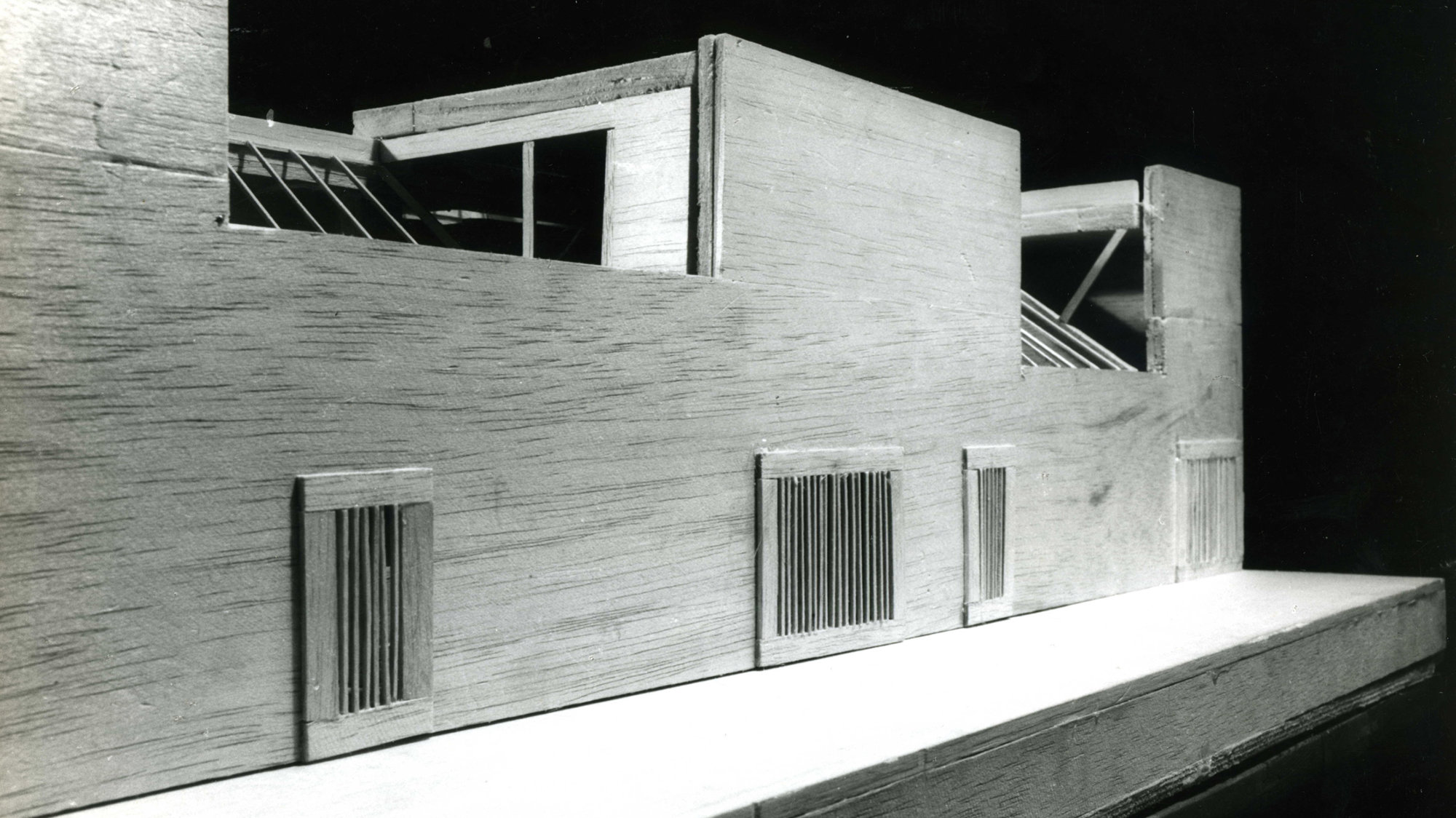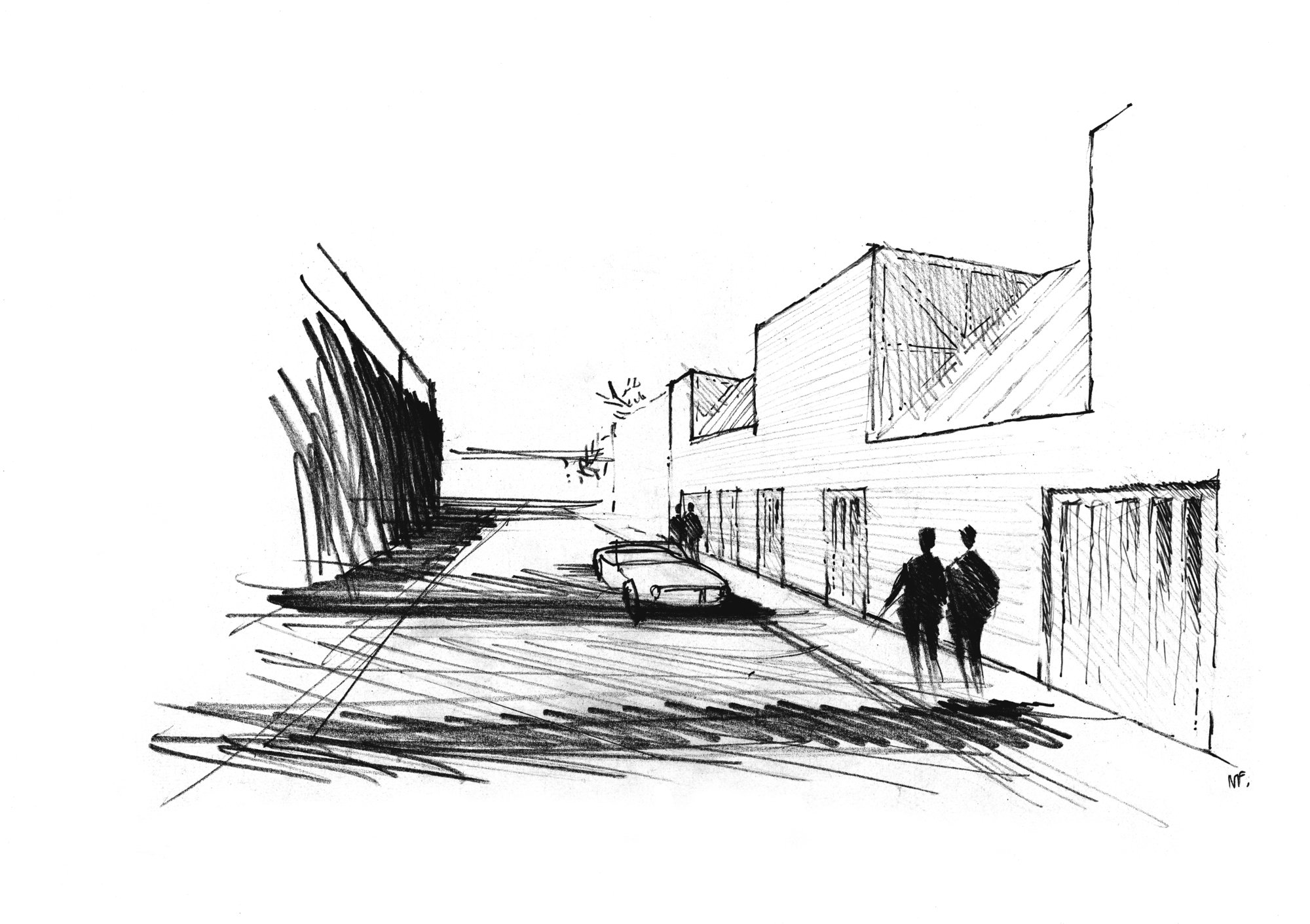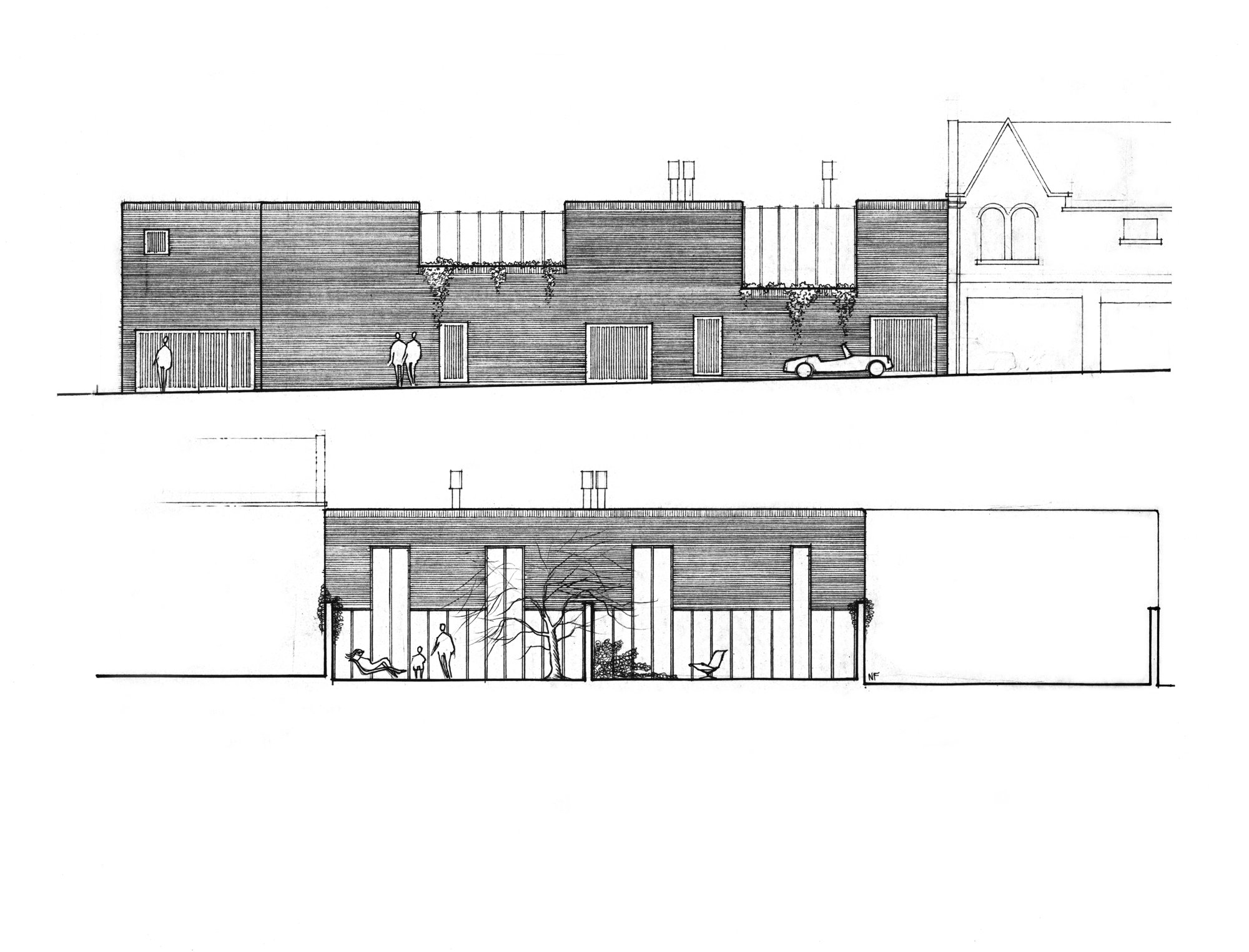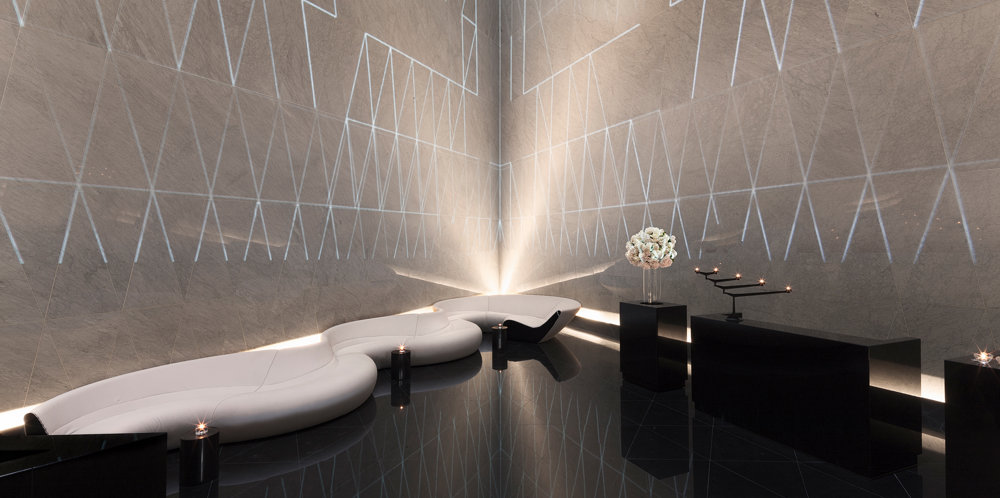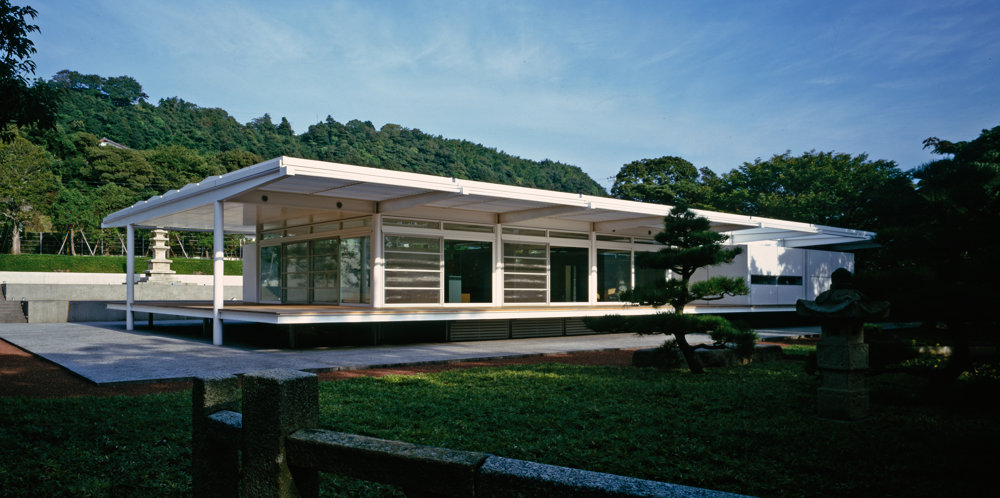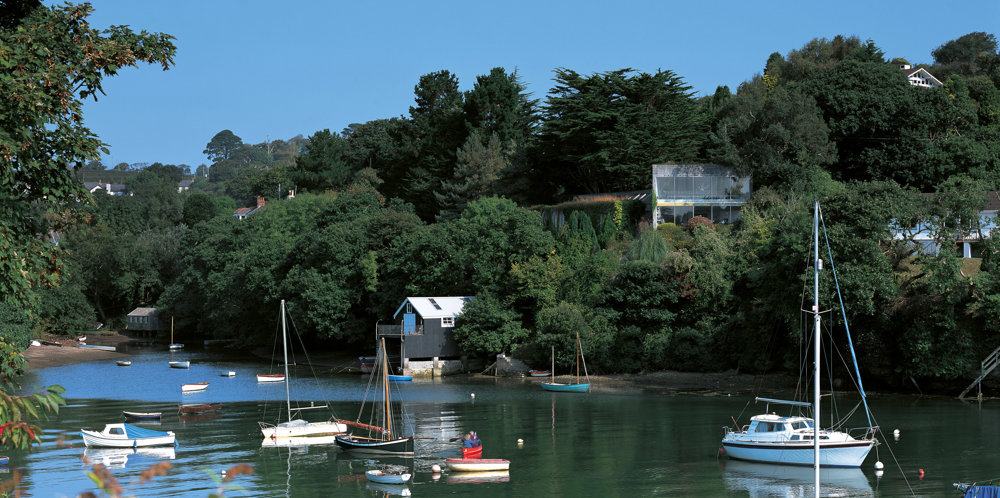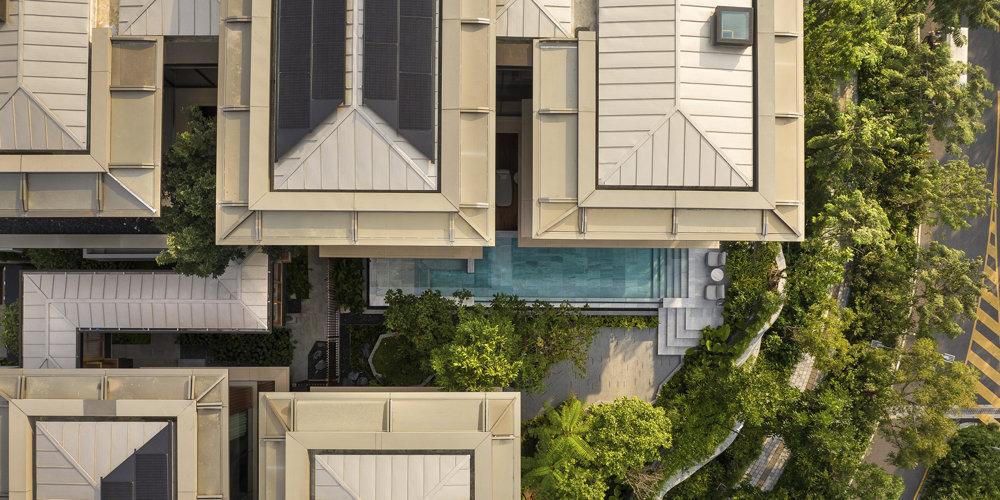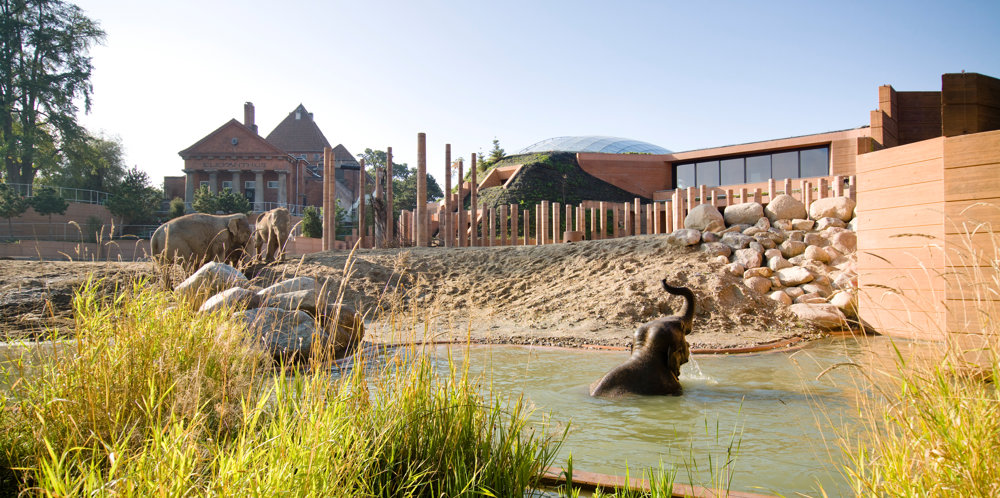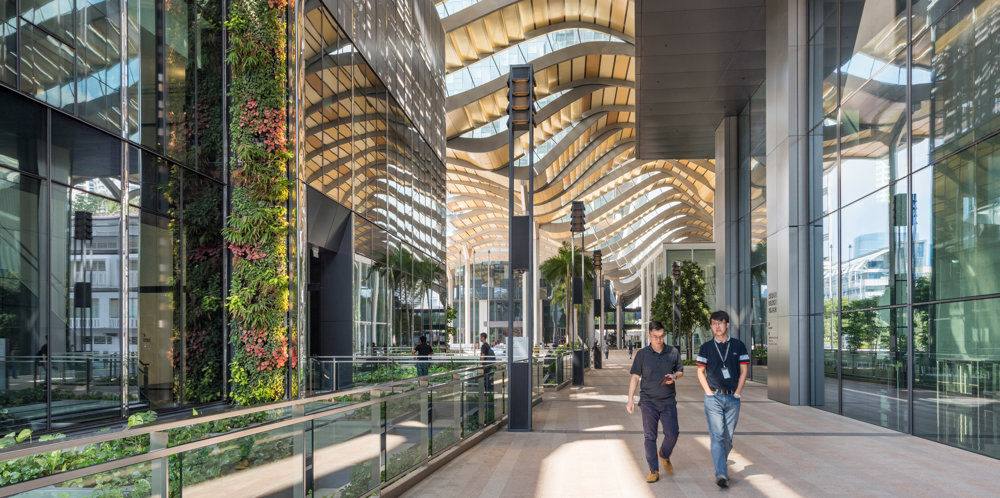View the 360 tour
Murray Mews consists of three houses, each on a very small plot. Skillful interpretation of building and planning regulations resulted in a design which made the maximum effective use of the sites by locating the houses directly on the front boundary, leaving a private courtyard to the rear, and preserving the visual integrity of the mews as a street. The internal planning of each house responded to particular needs of the occupants, a doctor with a strong interest in art, a husband and wife who were both barristers, and a skilled trade craftsman. The introduction of top light and a concern for individual privacy were strong elements of the design.
The street door opens straight into the kitchen which is raised a few steps to look over a worktop and built-in concrete table to the living room and a glazed wall with the courtyard beyond. The glass wall of the living room, like that of the kitchen-dining room at Creek Vean, is placed a metre or so forward of where the ceiling ends, so that more day-lit space is created. Standing in the kitchen, one is aware of bright top-lighting, then of a band of dimmer, intimate space in the living room, and then again of a band of brighter space along the window wall.
At an angle parallel to the sloping, glazed roof in the double-height kitchen, an open staircase runs up to the bathroom and bedrooms, with a few more steps leading up to a long top-lit picture gallery. From the balcony wall of this space one can look down into the kitchen as if from a minstrel gallery.
Courtyard, living room, kitchen and glazed 'attic' are thus related in a continuous spatial liaison; only the bedrooms and bathroom in the U-shaped middle level of the house are enclosed and separate. It is as if the medieval English 'Great Hall' has been miniaturised and centred on the kitchen.











